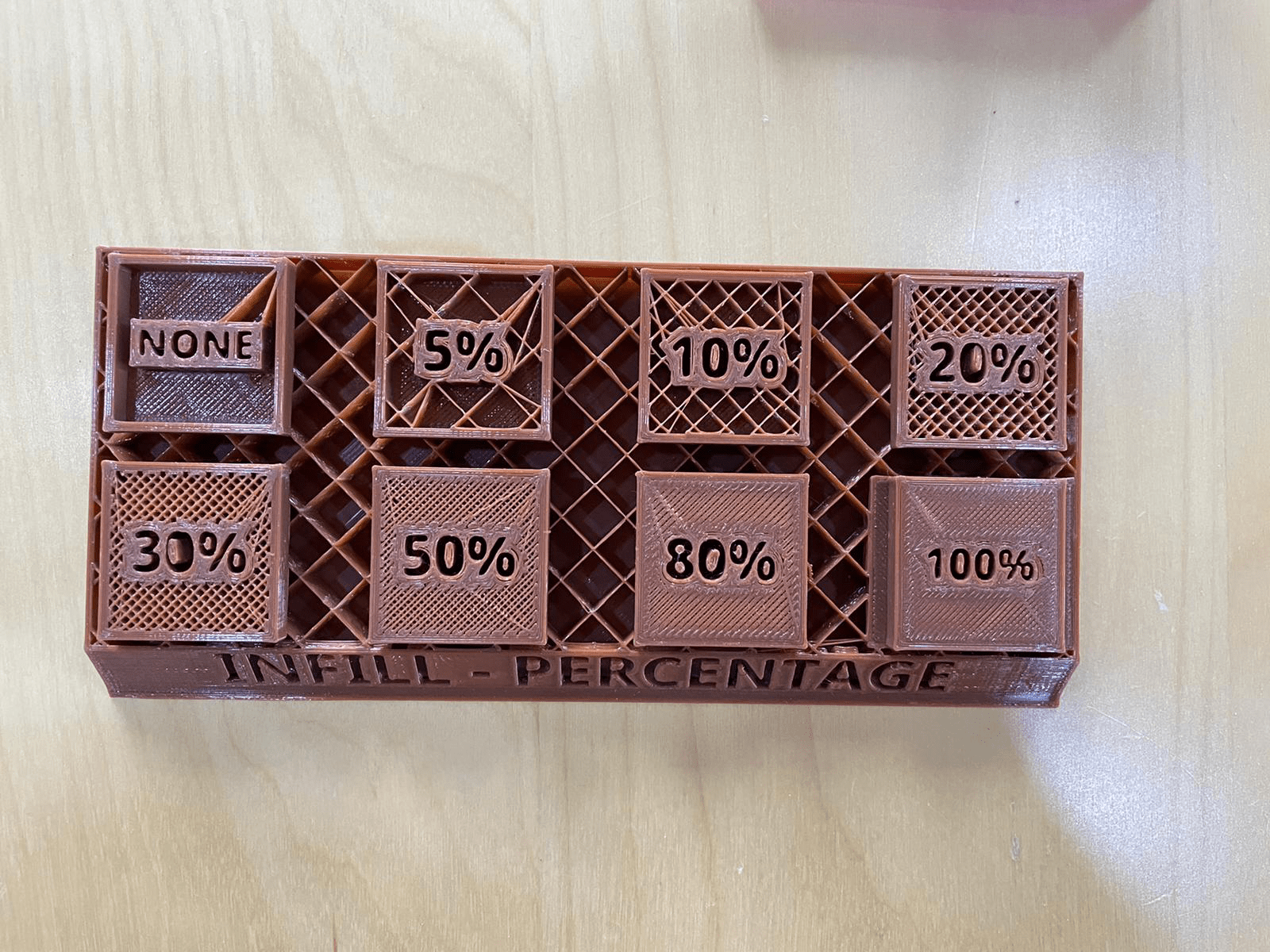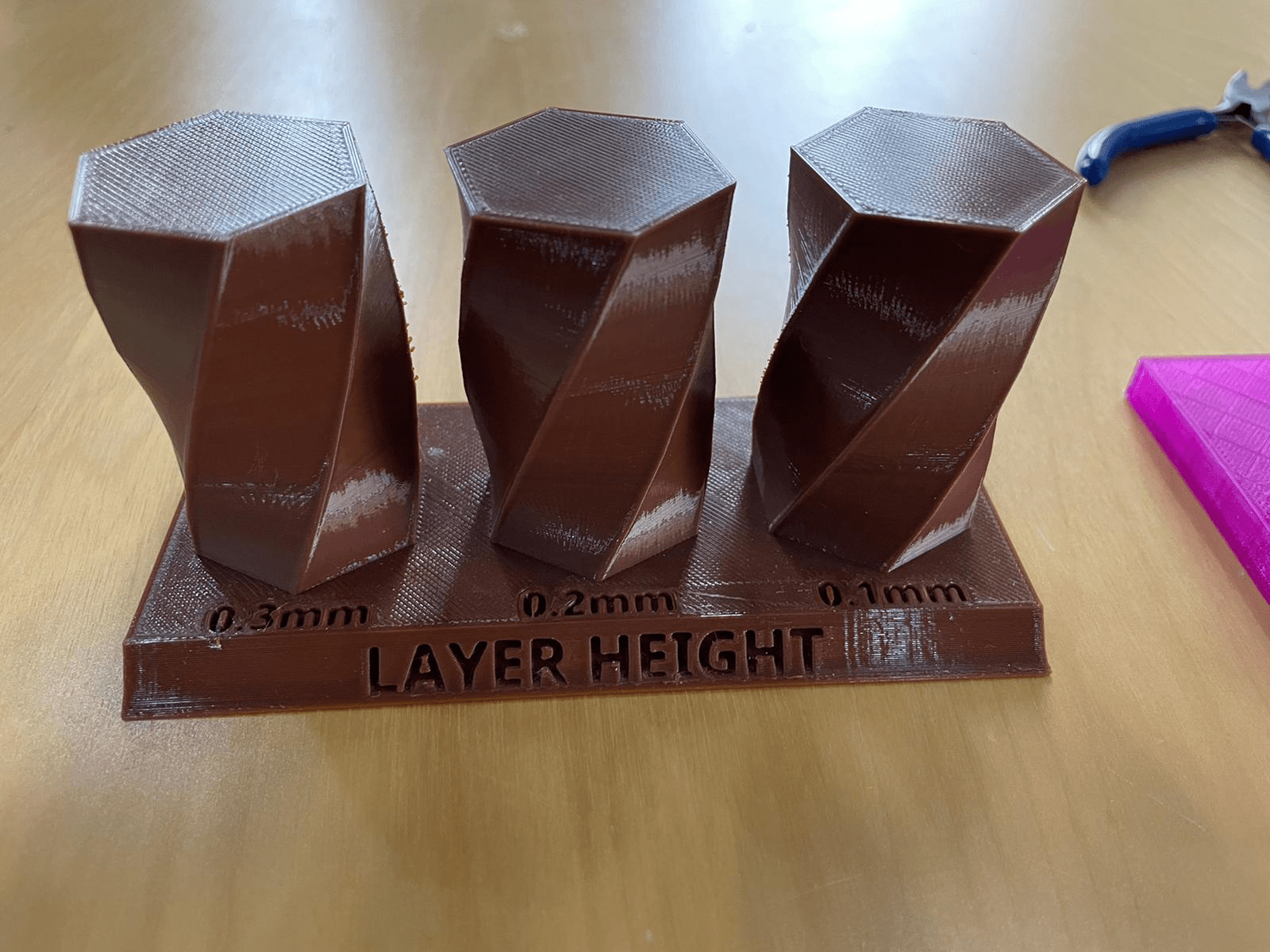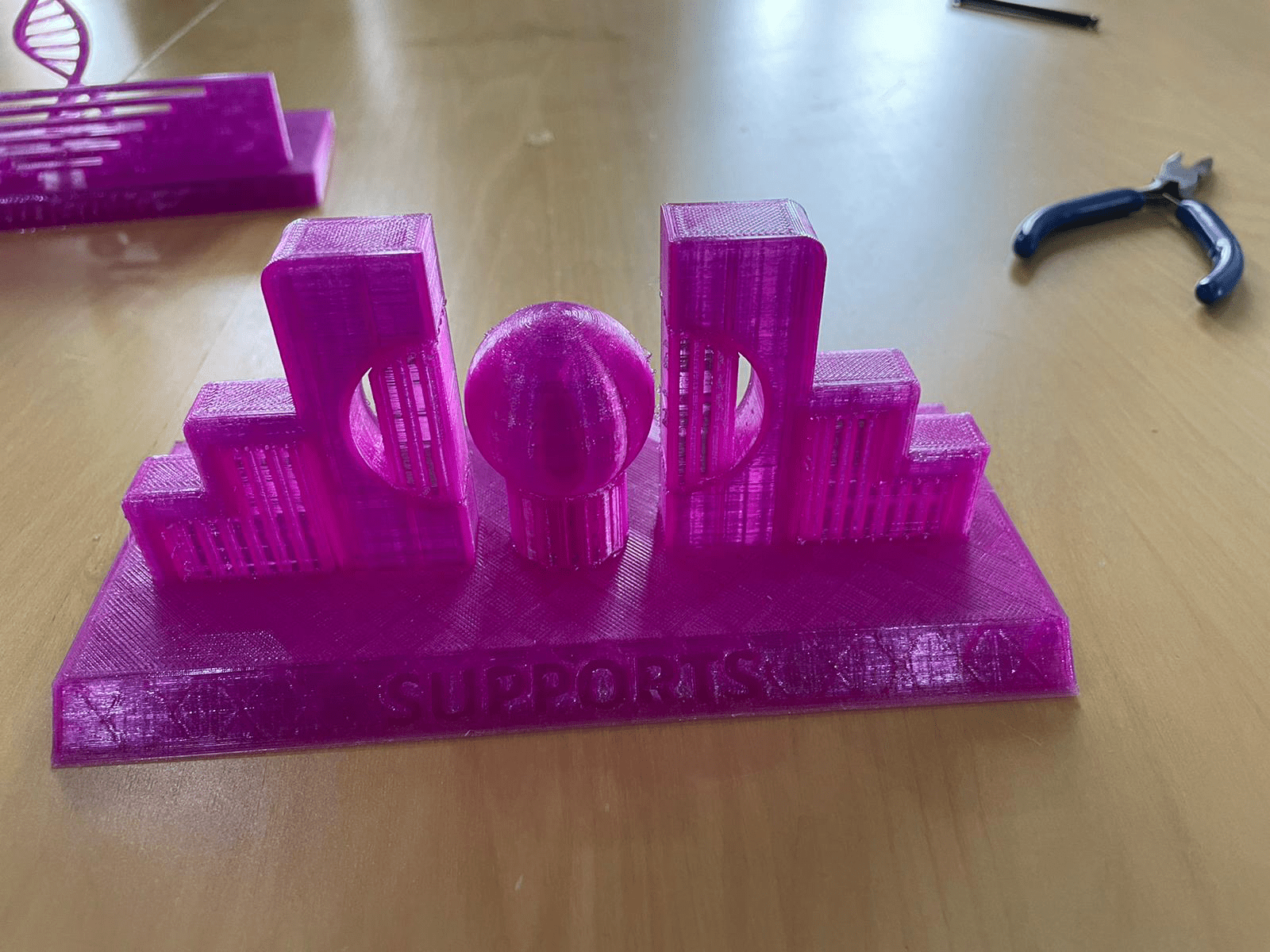8. 3D printing group assignemnt¶
Several tests were performed prior to the 3D printing process, namely, overhangs, shell thickness, bridging, infill percentage, layer height, and supports.
Overhangs test¶

Overhangs is a part of a structure that protects the lower parts of the structure. This test was performed to test for overhangs, it was designed to test angles at 20o to 85o with increments of 5o.
Shell thickness test¶

The shell part is the exterior of the 3d printed solid. The properties of the printed solid (such as the strength and durability) is highly dependent on the shell. This test was performed to examine three settings, 2 shells, 4 shells, and 8 shells.
Infill percentage test¶

Infill is the inside part of the 3d printed solid. Eight infill percentages were tested, none, 5%, 10%, 20%, 30%, 50%, 80%, 100%.
Bridging test¶

Bridging refers to the 3d printer’s performance in printing layers between gaps in lower layers without support (printing a bridge).
Layer height test¶

Layer height is the height of each plastic extruded. Three layer heights were examined, 0.3 mm, 0.2 mm, and 0.1 mm.
Support test¶

Used with almost all 3D printing technologies, support structures help to ensure the printability of a part during the 3D printing process. Supports can help to prevent part deformation, secure a part to the printing bed and ensure that parts are attached to the main body of the printed part. Support structures help to ensure that a part of the 3D design is printed. In addition, they prevent part deformation, and ensure that the parts are attached to the main body of the 3D solid.